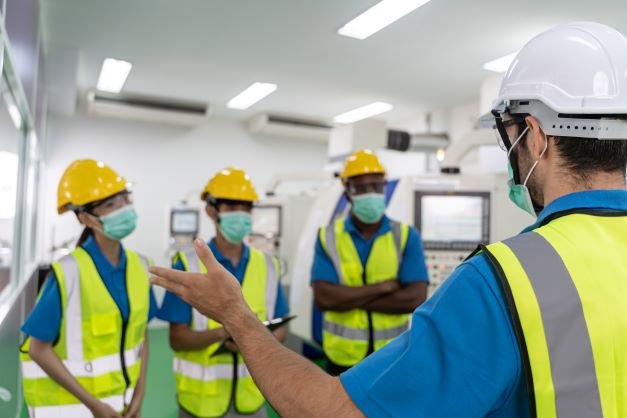Health and safety in the workplace is about managing risks to protect your employees and the business. It’s important to provide staff with the correct training and PPE to conduct their work efficiently.
Increased productivity and training
Workers are more productive in workplaces that are committed to health and safety and businesses benefit from an effective H&S plan in place as this reduces illness and accidents which can cause staff to be off for long periods of time.
Effective training can help businesses avoid the distress that accidents may occur and it ensures that staff are up to speed on how to avoid these risks. Having a good reporting system in place also encourages staff to identify possible risks.
Accidents can be very costly and training can help workers understand how to protect themselves and how to avoid putting themselves at risk. Representatives within the company who offer support in case of an accident can put staff at ease. If any questions arise, employees should know who to contact.
PPE clothing and using safe equipment
Providing the correct PPE can reduce illness and accidents. For example: ear plugs for areas with loud machinery or hard hats to avoid falling objects hitting the head. Keep crisis exits easily accessible and ensure staff know not to leave anything on the floor and block the route. Foot injuries in the workplace are unfortunately also common and sturdy footwear offers protection at work.
Purchasing the right tools and checking if they are fully functional before using them each time can prevent accidents from happening. Power tools can potentially be very dangerous and older machines may break down over time or malfunction. All power tools and machines should be certified and tested.
Lifelong learning
The environments in which we work change over time, which is why many industries consider lifelong learning a necessity. By regularly proving that certain standards can be met and by obtaining the right certificates, employees and businesses can show that they can carry out the work in a responsible and safe manner – and avoid endangering themselves and others.
Implementing safety regulations can also mean carefully planning certain transportation routes and processes. By working in a more structured and organised way, you can stay in control and avoid accidents from happening.
Happier employees
Safer work environments contribute to making employees feel happier and less afraid, they can help lower insurance claims from accidents and ensure high working standards, making it easier for employees to be more productive. An organisation can benefit legally, morally and financially from making changes to keep everyone safe while at work. With the right kind of training, everyone within an organisation can become aware of how to work safely.

